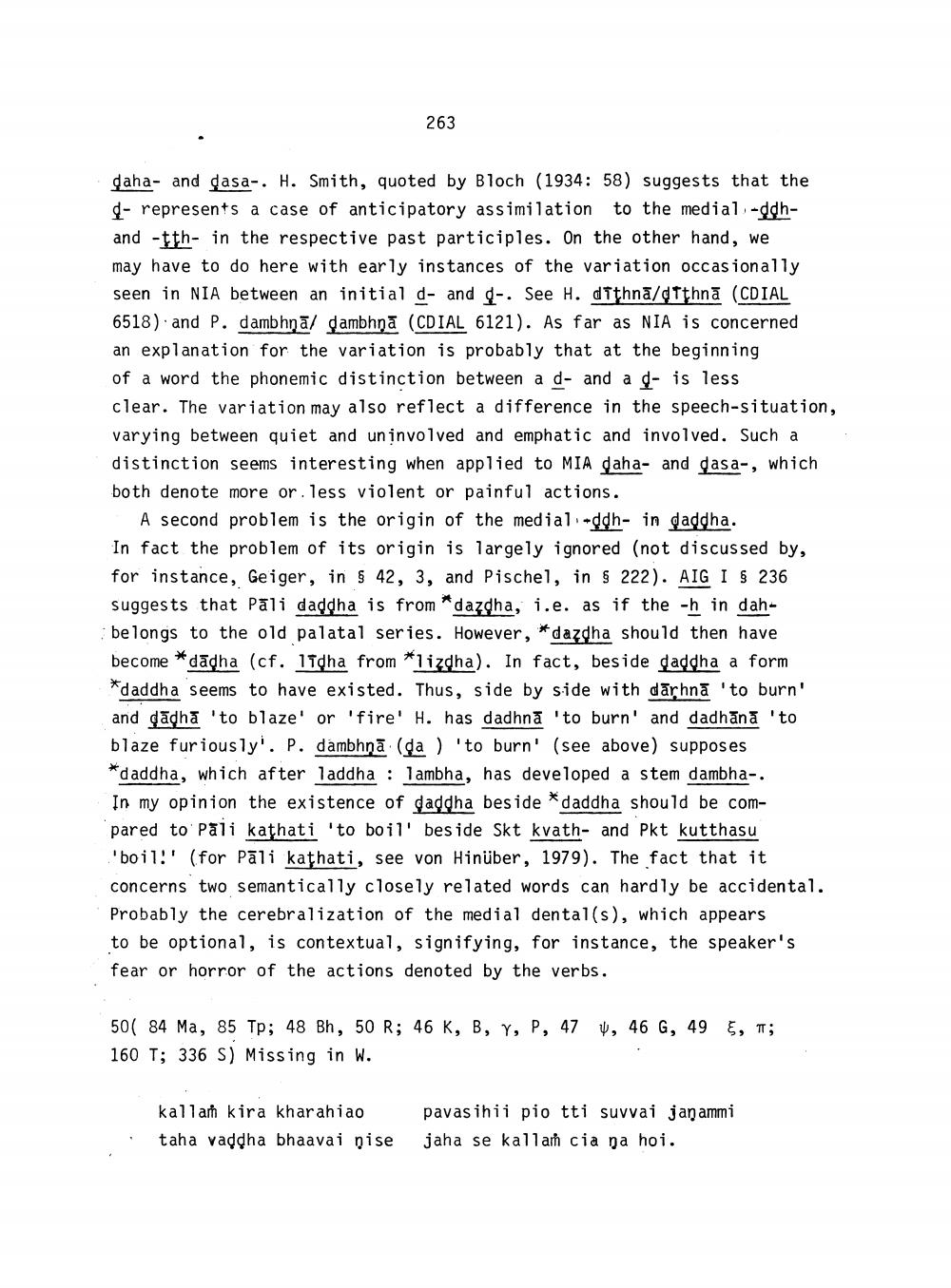________________
263
Jaha- and casa-. H. Smith, quoted by Bloch (1934: 58) suggests that the
- represents a case of anticipatory assimilation to the medial -ddhand - th- in the respective past participles. On the other hand, we may have to do here with early instances of the variation occasionally seen in NIA between an initial d- and 4-. See H. dtthna/dtthna (CDIAL 6518) and P. dambhņā/ Jambhņā (CDIAL 6121). As far as NIA is concerned an explanation for the variation is probably that at the beginning of a word the phonemic distinction between a d- and a d- is less clear. The variation may also reflect a difference in the speech-situation, varying between quiet and un involved and emphatic and involved. Such a distinction seems interesting when applied to MIA daha- and dasa-, which both denote more or less violent or painful actions.
A second problem is the origin of the medial -ddh- in caddha. In fact the problem of its origin is largely ignored (not discussed by, for instance, Geiger, in § 42, 3, and Pischel, in § 222). AIG I S 236 suggests that Pāli daddha is from *dazgha, i.e. as if the -h in dahbelongs to the old palatal series. However, *dazdha should then have become *dādha (cf. 1Tdha from *lizdha). In fact, beside daddha a form *daddha seems to have existed. Thus, side by side with dārhna 'to burn' and dādha 'to blaze' or 'fire' H. has dadhna 'to burn' and dadhāna 'to blaze furiously'. P. dambhnā (da) 'to burn' (see above) supposes *daddha, which after laddha : lambha, has developed a stem dambha-. In my opinion the existence of daddha beside *daddha should be compared to Pali kathati 'to boil' beside Skt kvath- and Pkt kutthasu 'boil!' (for Pāli kațhati, see von Hinüber, 1979). The fact that it concerns two semantically closely related words can hardly be accidental. Probably the cerebralization of the medial dental(s), which appears to be optional, is contextual, signifying, for instance, the speaker's fear or horror of the actions denoted by the verbs.
50( 84 Ma, 85 Tp; 48 Bh, 50 R; 46 K, B, Y, P, 47 U, 46 G, 49 }, ; 160 T; 336 S) Missing in W.
kallan kira kharahiao taha vaddha bhaavai pise
pavas ihii pio tti suvvai janammi jaha se kallam cia na hoi.




